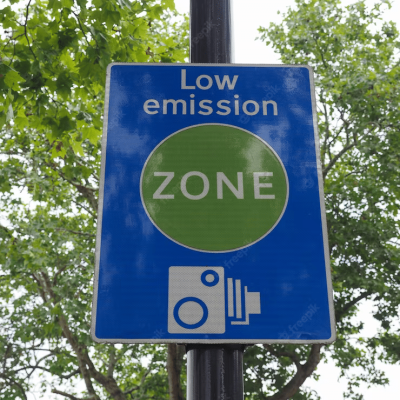In recent years, more and more European cities have introduced environmental zones to improve air quality and reduce car traffic emissions. But what exactly are environmental zones and how do they work?
An environmental zone is an area in a city where certain vehicles are not allowed to operate or only under certain conditions, such as having a certain type of engine or meeting certain emission standards. The purpose of these zones is to improve air quality by reducing vehicle emissions.
Each country has its own rules and laws regarding environmental zones. Below we give some examples of European countries and their rules on environmental zones:
Germany
Germany was one of the first countries to introduce environmental zones and currently has more than 80 of them across the country. Vehicles must have an environmental sticker to enter these zones. The environmental sticker indicates how polluting the vehicle is and what emission standards it meets. The cleaner the vehicle, the higher the rating and the more areas it can enter.
France
In France, there are around 30 environmental zones, called “zones à circulation restreinte” (ZCR). These zones range from permanent to temporary and can be set up based on air pollution levels. Vehicles must have a sticker indicating their emission level to enter these zones. Vehicles that do not meet the emission standards are not allowed to enter the zone.
Netherlands
The Netherlands currently has three cities with environmental zones: Utrecht, Rotterdam and Amsterdam. These zones are permanent and vehicles must meet certain emission standards to enter the zone. This applies to passenger cars as well as trucks and buses.
Spain
Spain currently has four cities with environmental zones: Madrid, Barcelona, Valencia and Seville. Each of these zones has its own rules and vehicles must meet certain emission standards to enter the zone. Emission standards vary depending on the type of vehicle and the classification of the zone.
Belgium
Belgium currently has one environmental zone in Antwerp. Vehicles must meet certain emission standards to enter the zone and there is a system of fines for vehicles entering the zone without meeting the standards.
These are just a few examples of European countries with environmental zones. Other countries that have such zones include Italy, Switzerland and the UK.
Environmental zones are an important part of efforts by cities and countries to improve air quality and reduce vehicular emissions. By establishing environmental zones, cities can reduce emissions from polluting vehicles and thus contribute to cleaner air.
It is important to note that rules for environmental zones may vary from city to city and country to country. It is therefore advisable to research well in advance what rules apply in the city you want to visit. This can avoid surprises and fines.
Environmental zones also encourage the development and purchase of cleaner vehicles, such as electric cars, hybrid cars and low-emission vehicles. This, in turn, can contribute to cleaner air and a healthier living environment for all of us.
In short, environmental zones are an important means of reducing car traffic emissions and improving air quality. By knowing what rules apply and choosing cleaner vehicles, we can all contribute to a healthier and cleaner living environment.

